Please see "rockets canon" at http://www.secretprojects.co.uk/forum/index.php/topic,6004.0/highlight,r4m.html
Post-3 drawing "escanear 0006"
Post-3 drawing "escanear 0006"
Siegfried Günter was from 1945 to mid 1950, a russian 'paperclip', he worked on the DFS 486, and brought back from Russia a design withboxkite said:After the War during the 50' Siegfried Günter of the Ernst Heinkel AG , Stuttgart-Zuffenhausen, designed some delta jet fighters :
- He 011 (1954) single jet for Egypt
- He 011 twin jets
- He S 7
- He 021 (or 012 ? ) (1955) for Spain ( Casa CH 101 in Spain )
- He 031 Florett (1957)
For all of them my knowledge is very scarce ,whith some ? ; I have pics of them apart the He 021
Who have more info ?
The following three fighter-interceptors have been shortly described in Köhler’s “Ernst Heinkel – Pionier der Schnellflugzeuge” (“Die deutsche Luftfahrt“ vol 5), but the author causes confusion, speaking of a He 021 in the appendix and of a He 031 in the caption of the three-view drawing ...
He 011- projected for Egypt (it’s your turn, hesham)
- delta wing
- 1 x Heinkel He S 053 / 1 x 6,500 kp
- span 11.50 m
- length 14.75 m
- wing area 57.50 m²
- gross weight 12,000 kg
- speed Mach 1.2
- year 1956
- Antonio has sent me the attached model picture (from AIR Enthusiast or AIR International?) – the width of the nose and the position of the air intakes is different compared with the drawing.
He 012 (= C 101 -> for Spain –> Antonio, is there more about this project in Manuel Lage’s “Hispano Suiza 1904 - 1972: Hombres, Empresas, Motores y Aviones”?)
- delta wing
- 1 x Bristol Orpheus / 1 x 2,500 kp
- span 6.78 m
- length 9.95 m
- wing area 20.00 m²
- gross weight 3,900 kg
- speed Mach 1.2
- year 1956
He 021 (or He 031 ???) “Florett” (i. e. ‘foil’)
- Heinkel’s entry for the first German postwar competition requiring an interceptor (November 1956), the “Florett” was developed by a team headed by Siegfried Günter, this proposal was the winner, but the tactical requirement changed – the German Ministry of Defence wanted to get fighters with VTOL capability … (-> He 231 -> VJ 101A -> VJ 101C)
- 1 x D.H. Gyron Junior plus 1 x D.H. Spectre / 1 x 3,220 kp plus 3,632 kp
- span 8.64 m
- length 13.17 m
- wing area 23.12 m²
- gross weight 5,200 kg
- speed Mach 1.2
- year 1957
Heinkel S 7 – Heinkel S … is a engine designation for me, but I’m not very familiar with this line.
PaulMM (Overscan) said:A very nice article on an interesting Heinkel project of the mid/late 1950s was in the December 2007 issue of Flugzeug Classic. Tiny thumbnails including below to whet your appetites.
hesham said:
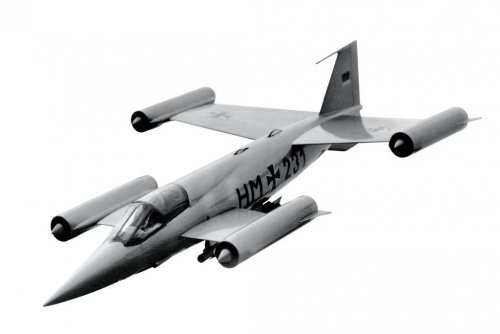
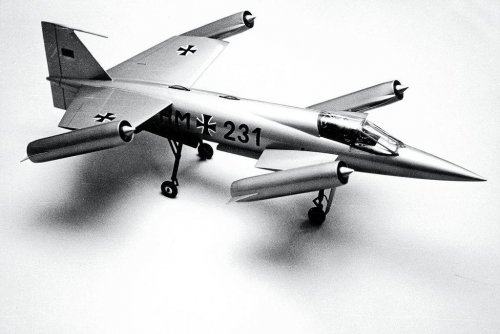
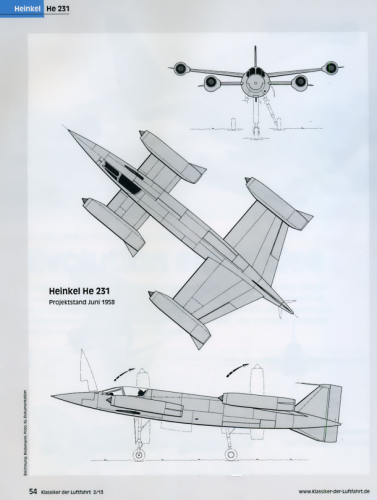
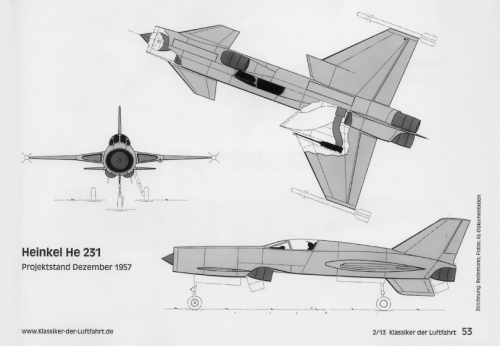
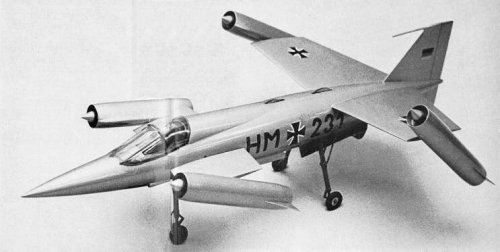
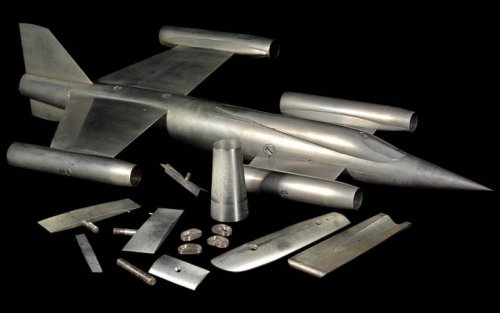
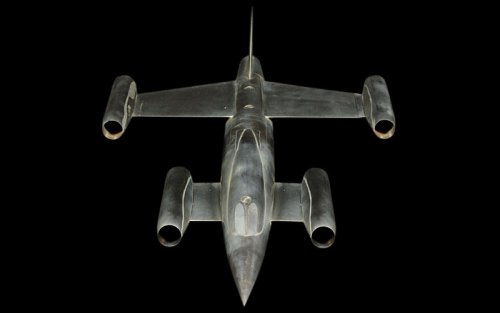
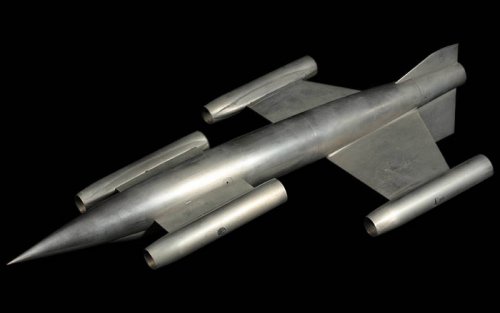
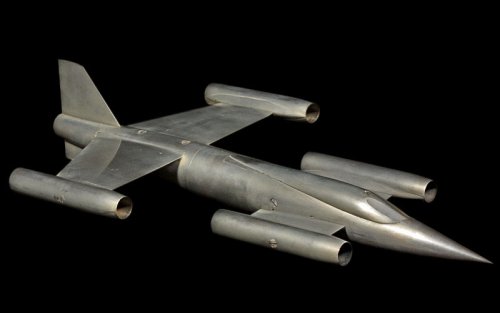
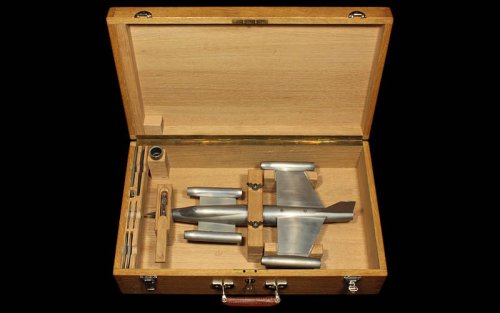
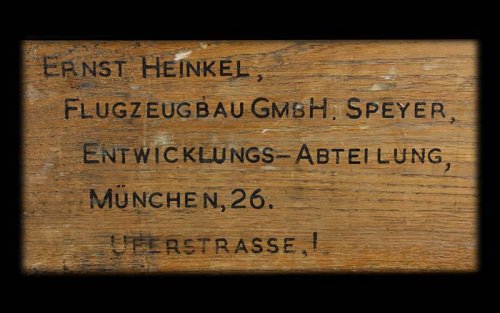
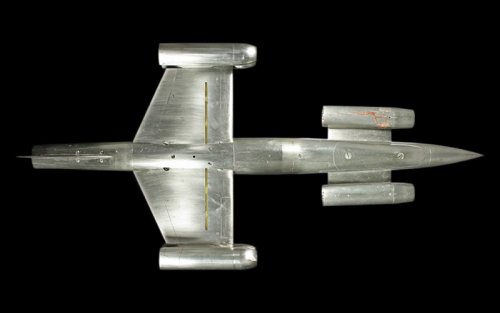
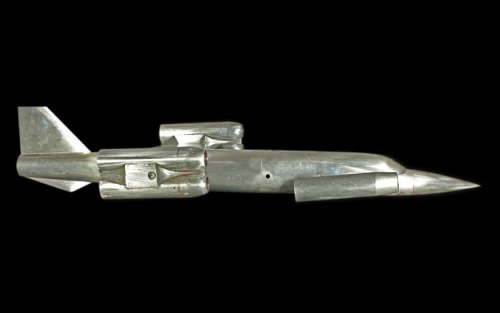
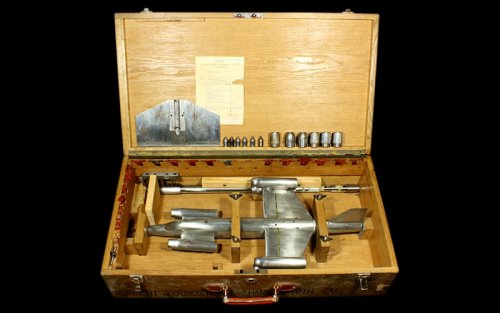
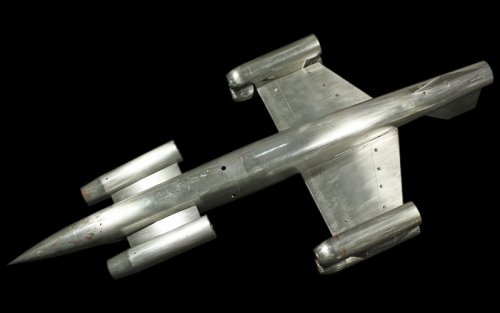
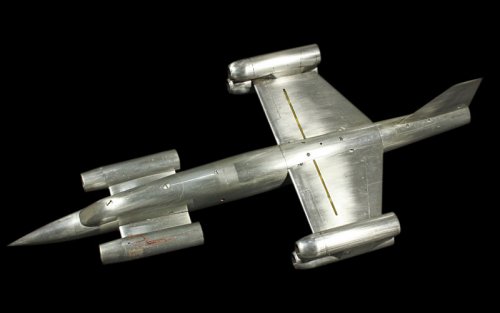

Here you've got the photo that I did post some time ago when I had found it in a Russian forum (https://www.secretprojects.co.uk/threads/heinkel-postwar-fighters.1122/post-303332). Now the photo comes from the "Flugzeug Archiv Band 5". Its caption refers to the aircraft as "the second version of the Heinkel interceptor S 7". Leaving aside the "S 7" designation, it seems quite interesting that there was "the second version" of the project. So obviously there must have been also the first version thereof.
Piotr
Very nice Piotr, do you know of any drawings of the delta design intended for Egypt ? would make for an interesting model
Is there any more information on the HeS 053? I've tried looking it up but there is NOTHING on the internet about this engine. Also why wasn't it considered for the Florett? I've read the Gyron Jr. was selected because of a lack of available German engines, but I've read conversely that the HeS 053 was ready for testing, and it would have offered more power than the Gyron Jr. Was the Heinkel engine scrapped after the deal with Egypt fell through?I've meant the design known as He-011.
Here I've gathered very few pictures of it (most of them already published in our forum), in two I've marked up what seems to be the gun ports (which may be seen clearly in the mock-up photo I posted earlier). It was they that made me think the mock-up photo shows the He-011.
Besides here are pictures (containg data) on He S 053 engine that was to power the fighter for Egypt.
Piotr
Wow, one would think the firing of those cannons in the position they are would have blinded the pilot at night.
Here you've got the photo that I did post some time ago when I had found it in a Russian forum (https://www.secretprojects.co.uk/threads/heinkel-postwar-fighters.1122/post-303332). Now the photo comes from the "Flugzeug Archiv Band 5". Its caption refers to the aircraft as "the second version of the Heinkel interceptor S 7". Leaving aside the "S 7" designation, it seems quite interesting that there was "the second version" of the project. So obviously there must have been also the first version thereof.
Piotr
I'm not sure that that information is correct. If the aircraft was designed in 1957 but never came to fruition, that can only mean one thing... it lost to the F-104 in 1958. Pretty crazy to think Germany could have potentially been flying an indigenous fighter design for much of the early Cold War instead of the F-104. Quite a shame too in my opinion.He 021 (or He 031 ???) “Florett” (i. e. ‘foil’)
- Heinkel’s entry for the first German postwar competition requiring an interceptor (November 1956), the “Florett” was developed by a team headed by Siegfried Günter, this proposal was the winner, but the tactical requirement changed – the German Ministry of Defence wanted to get fighters with VTOL capability
I read it was given the designation "C-7" by the Spanish air ministry. Messerschmitt's HA-300 received the designation "C-6". Also from what I've read, Spain lost interest in the HA-300 after the glider failed (I'm guessing it had aerodynamic stability issues). At this point Egypt expressed interest in the fighter and Messerschmitt's team packed up and moved to Helwan. I don't know the details surrounding the move to Egypt.I have found no references about what would have been He-012 designation if it would have series produced by CASA.
I've been very curious about this. The so called Heinkel Strahltriebwerke HeS 053, there exists almost no data about it online, I have found all of three pictures of the engine, one of which has specifications, if the claimed thrust rating was true, this engine would have been an absolute monster for its time. But given the utter lack of any information about it I've begun to question whether it was even real, whether the thrust specifications were just ambitious goals. If anyone has any information about this engine, I'd be very pleased to learn about it.You may find interesting that Willy Radinger and Walter Schick in their "Secret Messerschmitt Projects" say the engine for the He-011, the aircraft designed for Egypt, was to have a static thrust of 5880 kp and 8100 kp with afterburner.
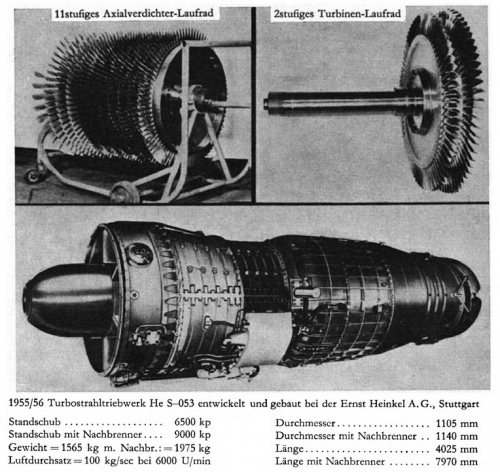
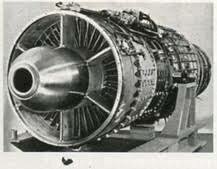
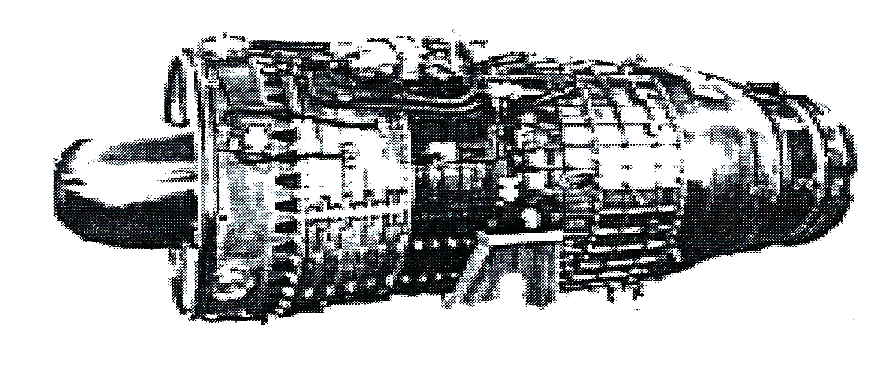
Also, if it was real, I have to wonder why the He 031 was designed to use the Gyron Junior instead of this engine. Was it destroyed along with the blueprints after Egypt cancelled the contract for the He 011?
There's a wikipedia article, unfortunately only in German, but fortunately there is a translated version here: https://second.wiki/wiki/heinkel_he_031Also, if it was real, I have to wonder why the He 031 was designed to use the Gyron Junior instead of this engine. Was it destroyed along with the blueprints after Egypt cancelled the contract for the He 011?
From where you got this ?.
